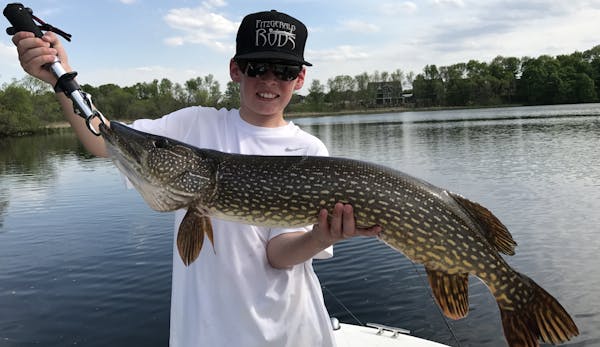Correctly playing hooked fish, properly netting them and safely handling them once they are boated are important angling skills — especially if the fish in question is big.
On the Outdoors page each Wednesday we try to publish photos of anglers holding their prize catches the correct way. But we do receive many photos we don't publish because they might give readers the impression that holding a fish "any old way" for a photo is OK, when it's not.
Consider first fishing equipment:
The intent when a fish is hooked should be to bring it to a boat (or shore or dock) as quickly as reasonably possible. This doesn't mean reeling so quickly that a fish is skidded through or on top of water. But neither should a fish be fought to submission.
The goal, if the fish is going to be released, is to have it survive after being freed.
To increase the likelihood this will happen, anglers should make sure their line is in good condition and weighted correctly to handle targeted fish. Similarly, rods and reels should be sized correctly.
Net size and condition also are important: Big fish shouldn't be folded into small nets.
Boat cleanliness and organization also can affect survival of caught fish. Hauling even a reasonably large muskie or northern pike into a boat where rods, reels, hooks and bait are strewn about is asking for trouble — and can be problematic even when smaller fish are boated.
Remember also that some parts of a fish intended for release shouldn't be touched, including its eyes and gills.
Finally, taking photos of trophies, large or small, requires care so fish aren't injured.
Big fish — say those larger than about 2 pounds — should always be held horizontally. This is especially true for sturgeon and muskies, as well as large northern pike.
Yet sometimes even these fish must be briefly lifted from a net in a vertical or semi-vertical position, just as smaller fish often are. This can be accomplished safely by sliding one or more fingers inside a fish's gill plate and along the bony interior wall, while avoiding the gills.
When the fingers reach the top of the gill cover and a reliable hold has been achieved, the fish can be lifted semi-vertically or vertically, while being supported with the opposite hand.
Once this has been achieved, and the fish is in hand in a boat or on a dock, the fish should quickly be reconfigured to a horizontal position and held with both hands.
Finally, as summer progresses and water warms, dangers to hooked fish increase. All the more important at these times to get them to the boat or dock or shore quickly, revive them as necessary and release them.
Dennis Anderson • danderson@startribune.com

Anderson: Celebrate Earth Day by rekindling real connection to nature
Anderson: Anglers protesting tough new Mille Lacs rules are wrong

Anderson: Courts, not politicians, should rule on Red Lake, White Earth lands

Anderson: Multimillion windfall gets invasive carp deterrent moving
![A young whitetail deer searches for food as another blanket of snow coats the arrowhead. ] Minnesota -State of Wonders, Arrowhead in Winter BRIAN PETE](https://arc.stimg.co/startribunemedia/WK32UWWY6FKNWJUIYCJ6ZPT4AU.jpg?h=91&w=145&fit=crop&bg=999&crop=faces)

